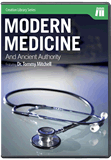Endosymbiosis
Hall of Life—Origins of Life Exhibits
on December 7, 2015Did the first cells begin when they gobbled up other cells?
Molecular geneticist Dr. Georgia Purdom says,
Organelles such as mitochondria and plastids have extremely integrated and complex relationships with other parts of the cell where they reside. One of those relationships is the ability to transport organelle proteins that are encoded by genes in the nucleus and formed in other parts of the cell back into the organelle where they are needed for the organelle’s proper functioning.
The transport pathway is composed of many proteins that work together to bring the protein into the organelle. Each organelle has specific pathways (which differ between organelles) to accomplish this, and there are typically several different pathways needed to bring a variety of proteins into the organelle. For example, five pathways have been identified so far for transport of proteins into mitochondria. Each pathway is composed of several proteins; some are shared among the pathways, while others are unique to a pathway. The case is similar for plastids.
Mutations cannot account for the origin of these protein-transport pathways. If there is no way to form these pathways, then the organelles would become obsolete once they started transferring their genes to the nucleus. Furthermore, if there was no pathway to return the proteins to the organelle, then the organelles would stop functioning and would no longer be selected for because they did not serve a purpose.
For more information, see “‘Non-evolution’ of the Appearance of Mitochondria and Plastids in Eukaryotes.”
Museum Guide
Are you exasperated by all the hype about "millions of years" in secular museums? The Museum Guide will help!
Browse Kids BookRecommended Resources
- © 2024 Answers in Genesis
- Privacy Policy
- Contact
- About





